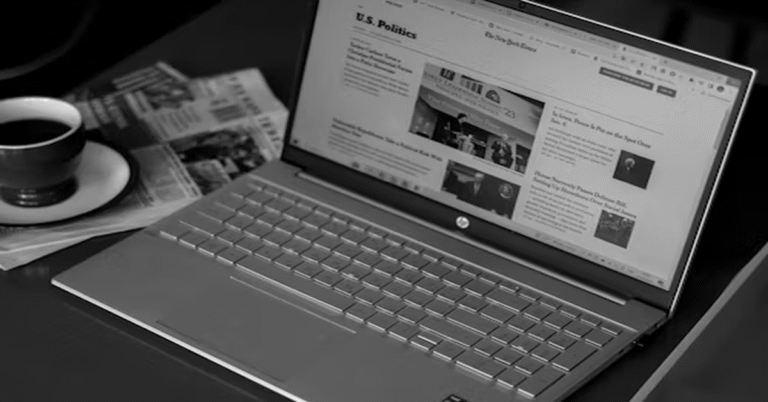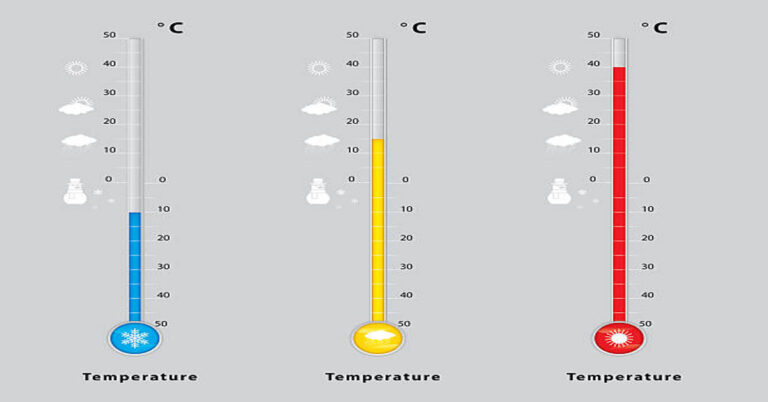
In the modern era of overwhelming choice in cameras—from full-frame behemoths to smartphone-competing compacts—the Fujifilm X100VI stands out with a distinct proposition: deliver class-leading image quality and advanced features inside a compact, fixed-lens body with retro charm. For enthusiasts who crave premium performance without the bulk of interchangeable-lens systems, the X100VI offers a unique blend of style, substance and portability. In this detailed article we’ll explore the X100VI’s design, key specifications, image and video capabilities, handling and ergonomics, use-case suitability, advantages and possible limitations, how it compares to alternatives, accessory ecosystem, and best practices. By the end you will have a clear picture of whether this camera is the right choice for your photographic goals.
1. The Concept & Heritage
The Fujifilm X100VI continues the lineage of the Fujifilm X100 series—cameras that marry fixed focal length lenses (usually 23 mm f/2, equivalent to 35 mm full-frame) with high quality APS-C sensors and premium bodies. The design ethos is rooted in rangefinder-style simplicity: analog dials, compact body, and a lens always attached. The goal: make photography easy and pleasurable, not overwhelming. With the X100VI, Fujifilm elevates this concept by incorporating a 40.2-megapixel sensor, in-body image stabilization (IBIS), hybrid viewfinder, advanced autofocus, and strong video features—all within that compact, iconic form. The result is a camera that appeals to street photographers, travel shooters, everyday enthusiasts and those who simply want one high quality camera they can carry always.
2. Key Specifications at a Glance
Below is a table summarizing the most important technical specifications of the X100VI, giving a quick reference to its capabilities:
| Specification | Details |
|---|---|
| Sensor | APS-C (23.5 × 15.7 mm) X-Trans CMOS 5 HR, 40.2 MP B&H Photo Video+3Fujifilm X Series & GFX+3Fujifilm X+3 |
| Lens | Built-in FUJINON 23 mm F2 (≈35 mm full-frame equivalent) Fujifilm Hong Kong+1 |
| In-Body Image Stabilisation | 5-axis sensor-shift, up to ~6 stops improvement New & Used Cameras, Lenses & Accessories+1 |
| ISO Range (Photo) | Native: 125–12,800; Extended: 64–51,200 Bholas Photo Store+1 |
| Video Capture | DCI 4K (4096×2160), 4K (3840×2160), FullHD; 10-bit, H.265/H.264 B&H Photo Video+1 |
| Viewfinder | Hybrid optical/electronic system New & Used Cameras, Lenses & Accessories |
| Rear Screen | 3.0″ tilting touchscreen LCD Bholas Photo Store |
| Connectivity | WiFi 5 (802.11ac), Bluetooth 4.2 B&H Photo Video |
| Media Card Slot | Single SD/SDHC/SDXC (UHS-I) Fujifilm X+1 |
| Body Size & Weight | 128 × 74.8 × 55.3 mm; approx. 521 g (with battery) B&H Photo Video |
These specifications reflect a major step up in resolution and stabilization compared to earlier models, placing the Fujifilm X100VI firmly in the premium compact camp.
3. Lens & Optical Performance
Since the 23 mm F2 lens is built-in, the X100VI is optimized for a specific focal length—the 35mm equivalent, a classic and versatile field of view. This makes it excellent for street photography, daily documentary work, travel scenarios and general-purpose imagery. The optical design (8 elements in 6 groups including 2 aspherical elements) ensures high image quality across the frame. Fujifilm X Series & GFX+1
What this means in practical terms is a lens that offers:
- A bright aperture (f/2) for good depth of field control and low-light performance.
- Excellent sharpness, especially when paired with the 40MP sensor and advanced processing.
- The fixed focal length inspires mindfulness: you move to frame rather than zoom.
- Minimal lens-change hassle, making it compact and reliable.
One caveat is that if you frequently need telephoto reach or zoom flexibility, a fixed 35mm equivalent may feel limiting. However, for many photographers seeking simplicity and high image quality, this is precisely the appeal.
4. Image Quality & Sensor Benefits
The introduction of the 40.2MP X-Trans CMOS 5 HR sensor marks a significant upgrade. Higher resolution means finer detail, greater ability to crop or print large, and more flexibility in post-production. Combined with Fujifilm’s film simulation profiles and colour science, the images can look remarkably baked-in straight out of the camera.
Benefits you’ll notice in real-world use:
- Scenic or architectural shots reveal more texture and nuance.
- High ISO performance remains strong thanks to the newer sensor and processing.
- RAW conversion retains detail, enabling flexible editing workflows.
- The film simulation modes lend a stylistic quality that many Fujifilm shooters love.
Of course, resolution must be complemented by good optics, stabilization and workflow to fully exploit it—and the X100VI delivers across those areas as well.
5. Autofocus, Stabilisation & Usability
Fujifilm X100VI modern camera must perform not just in stills but in motion and in challenging lighting. The Fujifilm X100VI features advanced hybrid autofocus with a large number of AF points and improved subject detection (people, animals, vehicles) in many scenarios. Furthermore, the in-body image stabilization (IBIS) provides approximately 6 stops of shake compensation according to reviews, enabling sharper handheld shots in low light or when using slower shutter speeds. New & Used Cameras, Lenses & Accessories+1
Combined with the heritage of Fujifilm’s tactile manual controls (exposure dial, shutter speed dial, aperture ring), the camera bridges the gap between enthusiast manual control and modern automation. The rear screen’s tilting mechanism adds flexibility for low or high angle shots, and the hybrid viewfinder lets you choose between optical viewfinder (for classic feel) or electronic viewfinder (for frame preview and information overlay).
Handling the Fujifilm X100VI feels premium: metal body, clean controls, and a build that invites use. For travel or street use, it’s highly ergonomic—compact enough to carry for extended periods without fatigue, yet substantial enough to feel solid and capable.
6. Video Capabilities
While the Fujifilm X100VI primary focus is stills photography, it has meaningful video chops. It supports 10-bit internal recording, 4K and DCI 4K capture, and advanced codec options (H.265/HEIF etc) which makes it viable for content creators who don’t need pro cinema specs. As per spec sheets: DCI 4K at 23.98/24/25/29.97 / 50/59.94 fps, plus FullHD up to high frame rates for slow motion. YL Camera+1
In practical use this translates to:
- High quality video output suitable for YouTube, social media or light filmmaking.
- A fixed lens means you need to rely on your framing, rather than zoom.
- External audio input can be an accessory consideration if you intend to film interviews or professional sound.
- Stabilization helps but for cinematic work you may still choose a gimbal or rig.
Hence while it may not replace a dedicated video camera, the Fujifilm X100VI offers strong hybrid capability for stills-centric users who occasionally shoot video.
7. Use Cases & Ideal Photographers
Who is the X100VI best suited for? Based on its strengths, below are typical scenarios:
- Street and travel photography: The fixed 35mm equivalent field of view, quiet shutter, compact size and premium image quality make it ideal.
- Everyday carry / documentary: One camera you can take everywhere. No lens changes, high image quality ready for any moment.
- Portraits and lifestyle: With its fast aperture and high resolution, you can achieve shallow depth of field and excellent detail.
- Content creators / hybrid shooters: Those who primarily shoot stills but want serious video capabilities without switching systems.
Conversely, if you’re a wildlife, sports, or zoom-heavy shooter who needs interchangeable lenses, long telephoto reach or an expansive system, this may not be the perfect match.
8. Advantages & Highlights
Some of the standout advantages of the Fujifilm X100VI include:
- Premium image quality from a compact body.
- Fixed lens encourages creative discipline and simplicity.
- Retro styling and manual controls appeal to enthusiast photographers.
- Advanced features (40MP sensor, IBIS, hybrid viewfinder, 10-bit video) in a compact form.
- Excellent value relative to switching-lens systems with similar performance.
9. Limitations & Considerations
No camera is perfect, and understanding compromises helps you decide:
- Fixed lens means no zoom flexibility; you are committed to 35mm equivalent.
- Single UHS-I SD slot—so less speed headroom than UHS-II dual-slot systems.
- Fixed lens may be less ideal for telephoto or zoom users.
- Battery life is good but being compact and feature-rich means users may still carry spare batteries.
- Premium price relative to simpler compacts; you pay for performance and features.
10. How the X100VI Compares to Predecessors & Alternatives
It’s helpful to contextualize this model:
- Compared to the previous X100V, the Fujifilm X100VI offers higher resolution, IBIS, enhanced autofocus and video capabilities—representing a significant upgrade for those coming from earlier models.
- Against full-frame mirrorless systems: While full-frame stills may have depth-of-field or low-light edge, the X100VI offers much of that quality in a smaller, lighter, simpler form.
- Among compact premium cameras: The X100VI stands among the best due to its combination of build, image quality and lens. Many compact or travel cameras may compromise on sensor size or lens quality.
For many photographers, the decision becomes: do I value portability, simplicity and a fixed lens + premium sensor enough to live with the trade-offs? The X100VI answers this with a resounding “yes” for many use-cases.
11. Accessory Ecosystem & Practical Tips
To get the most out of the X100VI, consider:
- Spare battery (NP-W126S) and external charger—important if you carry all day.
- High quality UHS-I SD card, ideally high capacity for RAW and 10-bit video.
- Lens hood and protective filters for the built-in lens (the fixed lens still benefits from protection).
- Camera strap or sling optimized for compact carry.
- Firmware updates: Users report improvements via firmware (e.g., improved WiFi connectivity) that enhance usability. Reddit
- Learning the fixed focal length: practice moving your feet, framing consciously, embracing the 35mm viewpoint.
12. Best Practices for Everyday Use
To maximize the X100VI’s potential:
- Use the tilting screen for low/high angle shots even if you’re used to only eye-level.
- Exploit the built-in film simulation modes to reduce post-processing time.
- Leverage IBIS and high resolution for low-light handheld shots; you might be able to shoot sharp at slower shutter speeds.
- Carry the camera everywhere: its compact size means you’ll use it more.
- Try to embrace the discipline of the fixed lens: zoom with your legs, explore different compositions, cultivate the 35mm mindset.
13. Real-World Usage & Field Impressions
Many photographers who have adopted the X100VI report that it becomes their “go-everywhere” camera. The compact size coupled with a serious feature-set means they are more likely to carry it, use it, and capture moments they might otherwise miss with bulky gear. The film simulation modes and tactile controls elevate the experience, making it feel like a precision tool rather than just another camera. The 40MP resolution gives breathing room for high resolution prints, cropping or creative flexibility.
However, some users note that if you habitually zoom or change focal lengths often, you might feel constrained by the fixed lens. Others mention that for heavy video work with interchangeable lens needs or professional audio rigs, the X100VI may not fully replace a system camera. But these are trade-offs inherent in the design choice of a fixed-lens premium compact.
14. Buying Considerations & Value
If you’re considering purchasing the X100VI, ask yourself:
- Will I carry this camera everywhere I go? Because a compact is only useful if you use it.
- Am I comfortable with a fixed 35mm equivalent lens, or do I need zoom/telephoto options?
- Do I benefit from the higher resolution, IBIS and advanced video features?
- How does the price compare to alternatives in my region? (Note: pricing can vary, and delays or availability may affect value.)
- Are there local service, parts and accessories available?
Given its premium construction and performance, the X100VI retains good resale value and is likely to serve you well for years if you treat it as a core tool rather than a toy.
15. Conclusion
In a world where many cameras focus on modular flexibility and endless lens options, the Fujifilm X100VI offers a refreshingly focused alternative: one high-quality fixed lens, one camera body that does everything you need in excellent form, and a user experience that is more about creating and less about gear-wrangling. For the photographer who wants simplicity, style, portability and output that competes with larger systems, this camera delivers. It is not without its compromises, but the trade-offs are logical and aligned with its design goals. If your lifestyle and photographic goals match its strengths, the X100VI is a truly compelling choice—a tool you’ll enjoy grabbing day after day, and one that rewards you with excellent images and tactile satisfaction.
Frequently Asked Questions (FAQs)
1. Can the X100VI zoom?
No, the X100VI features a fixed 23 mm f/2 lens (35 mm full-frame equivalent). You cannot zoom optically; you compose by moving or crop in post.
2. Is the built-in lens good enough for serious work?
Yes. The lens is sharp, high quality and well matched to the 40MP sensor. For many photographers it is more than sufficient. The trade-off is no zoom.
3. How well does the X100VI perform in low light?
Very well: the 40MP sensor, in-body stabilization and modern autofocus allow it to handle low-light situations more capably than many earlier compact bodies.
4. Is it suitable for video work?
Yes for hybrid use. It supports 10-bit internal recording, 4K and DCI 4K. However, as a fixed-lens compact, it may not replace a full cinema setup for heavy video professionals.
5. Should I consider an alternate such as an interchangeable-lens camera instead?
If you need zoom, telephoto reach, large lens variety or dual-card redundancy, then yes an interchangeable-lens system may make more sense. But if you prioritise portability, simplicity and high image quality in one body, the X100VI is a strong contender.







